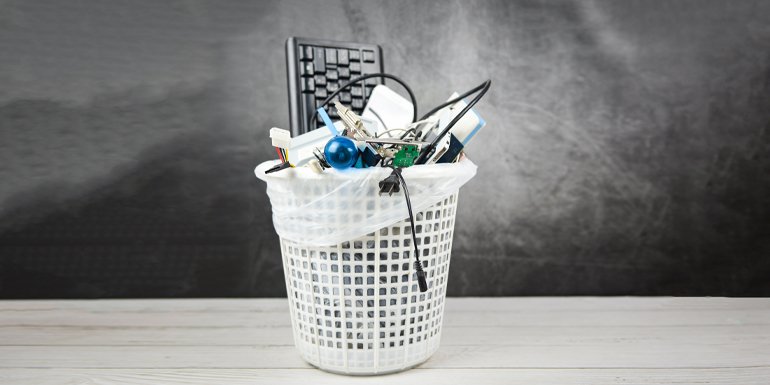How many mobile phones, Each day there is a new model of your favourite gadget that tempts you to buy it for its sleek design or better screen quality, simpler interface, lighter build or a cheaper price. But these rapid advancements have triggered a landslide of millions of tons of toxic electronic waste of discarded appliances that end up in large garbage landfills. To be precise, our world easily produces about 20 to 50 million metric tons of e-waste worldwide every year!
Why is E-waste so toxic?
It is because as compared to plastic or pure metal waste, E-waste is very difficult to recycle. We need sophisticated segregation and de-constructing technologies to safely take apart the devices to reuse or recycle their parts. If taken apart in a crude or rudimentary manner by rag-pickers, toxic chemicals present in them like lead, mercury, cadmium, and other organic chemicals that can infiltrate into the soil, pollute the rain-water and poison all freshwater/groundwater sources.
Why is such a threat?
E-waste is responsible for water, air and soil pollution. The developed countries try to invest in taking better care of e-waste disposal by trying to recycle it as much as possible, but even most technologically advanced countries like Japan can only recycle about 20% of their e-waste burden. In developing and third-world countries, e-waste is a direct human, animal and environmental hazard that causes deformities, diseases and poisoning every day.
Waste haulers and garbage pickers aren’t aware of these and de-construct them with their bare hands without using any protection for their skin, eyes, mouth, and nose. They take this risk because e-waste fetches a higher amount when pawned in the recycling centers and other local shops. They consistently inhale chemical fumes, absorb toxic heavy metals and compounds through their skin and breathing. Children in these countries especially acquire chronic illnesses that degrade their nervous, muscular, digestive, and immune systems permanently.
What is the future of e-waste?
Electronic waste and disposal are estimated to grow by at least 8% every year. Sadly a lot of the electronic garbage generated is actually discarded in a good condition that probably needs on a single part exchanged or a little fixing for reuse. Therefore, many companies and showrooms now host a slew of offers and discounts on the exchange of your old appliances for a new one. It is one small way to reduce the amount of e-waste but these programs aren’t mandatory. And there is still no clear solution or a strategy in place in any part of the world that points in the direction of sustainable management of e-waste that is only growing every day




